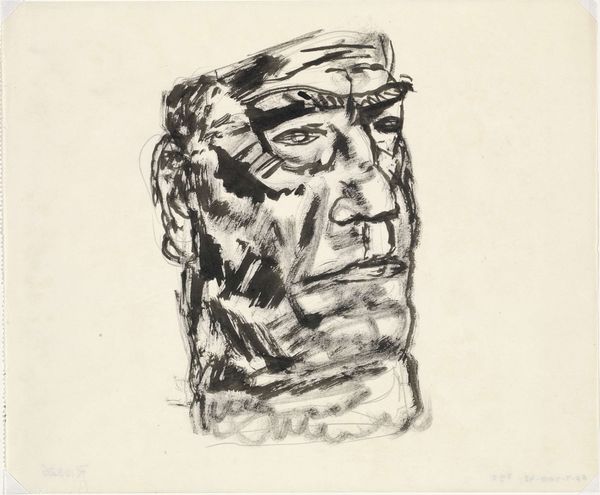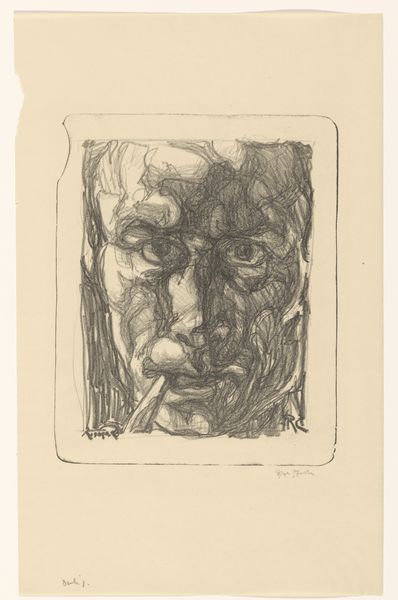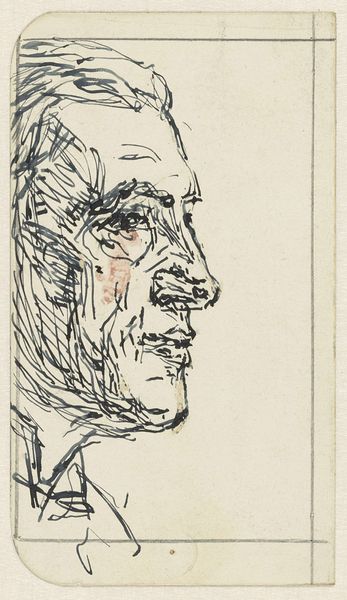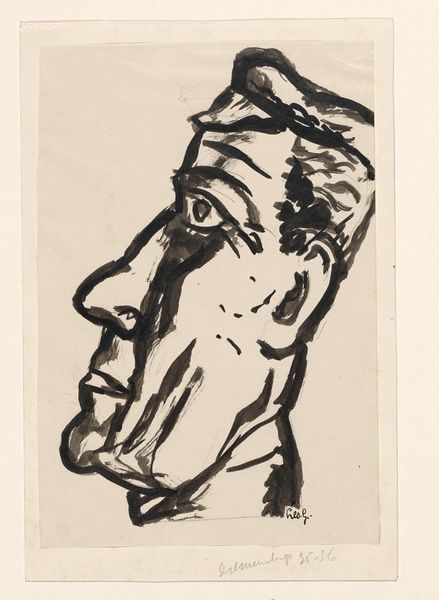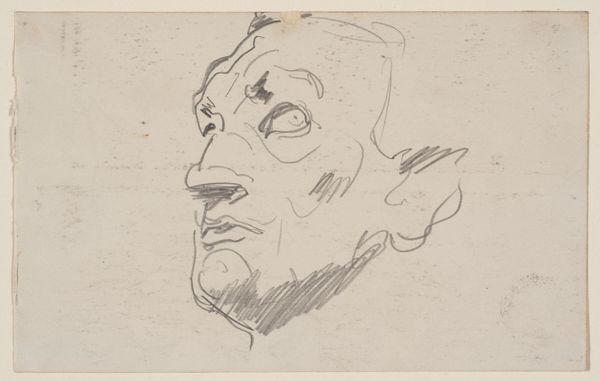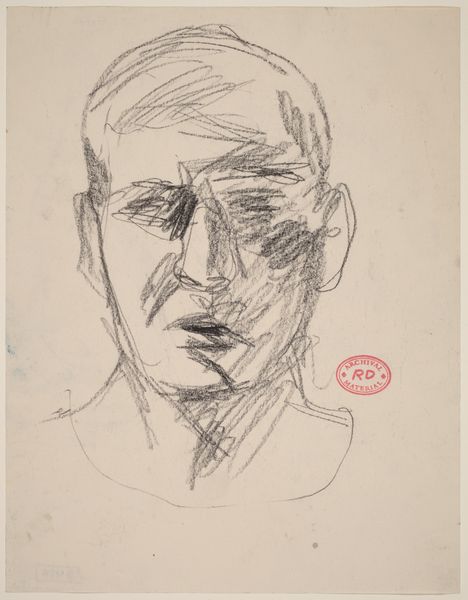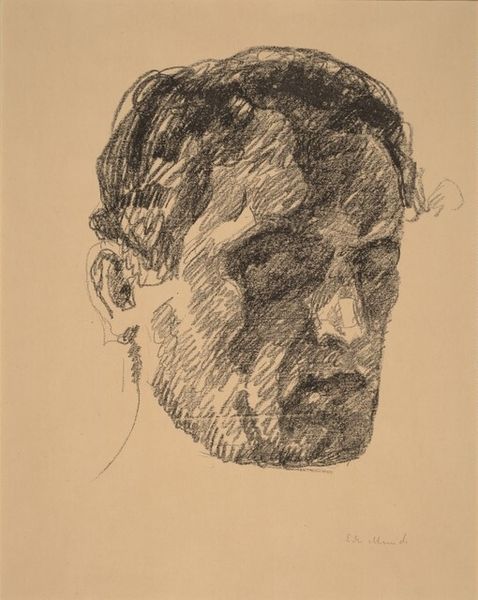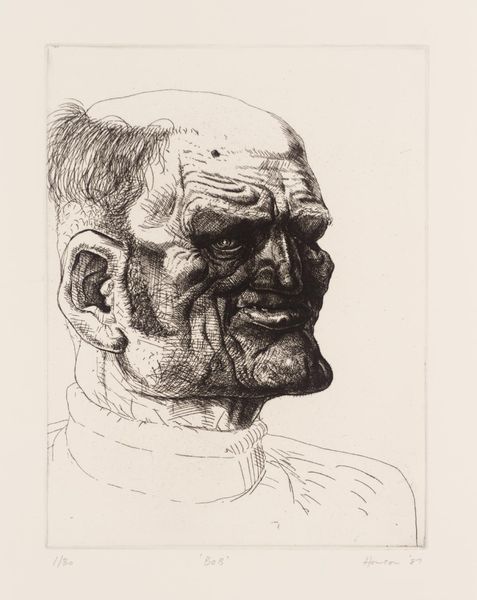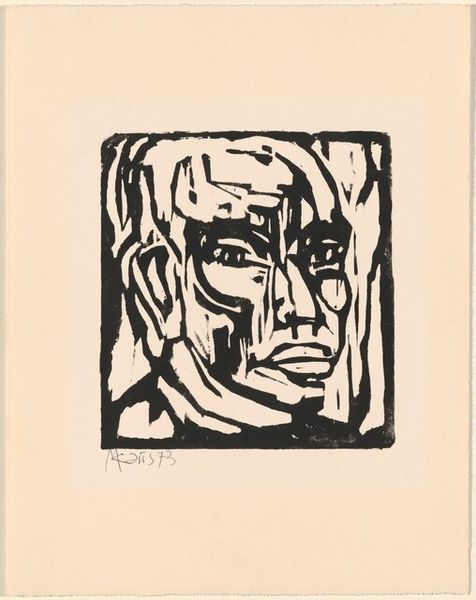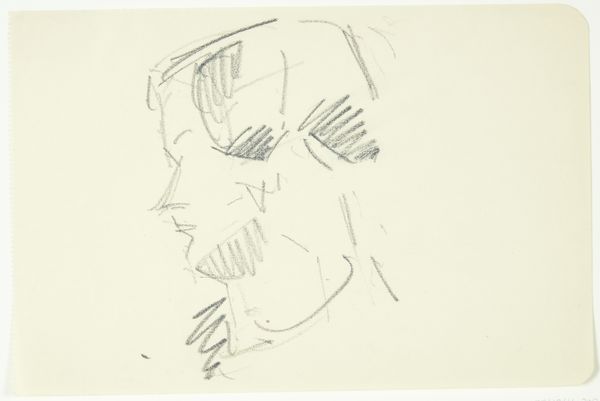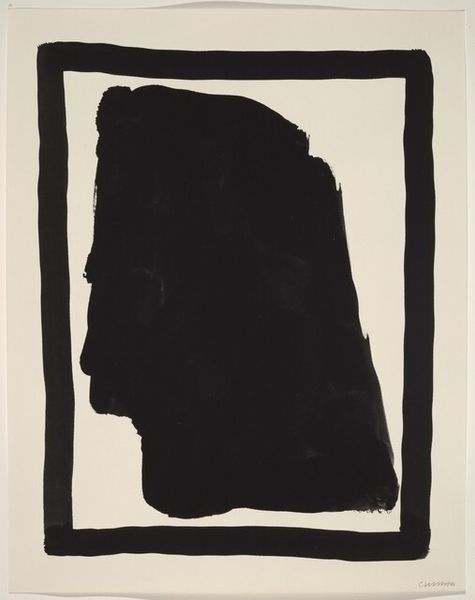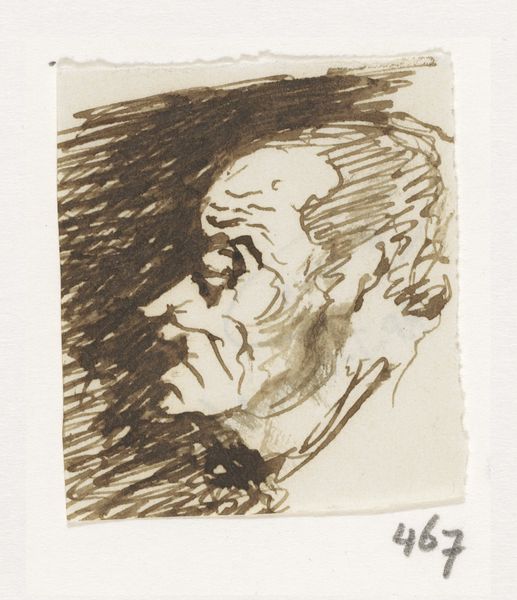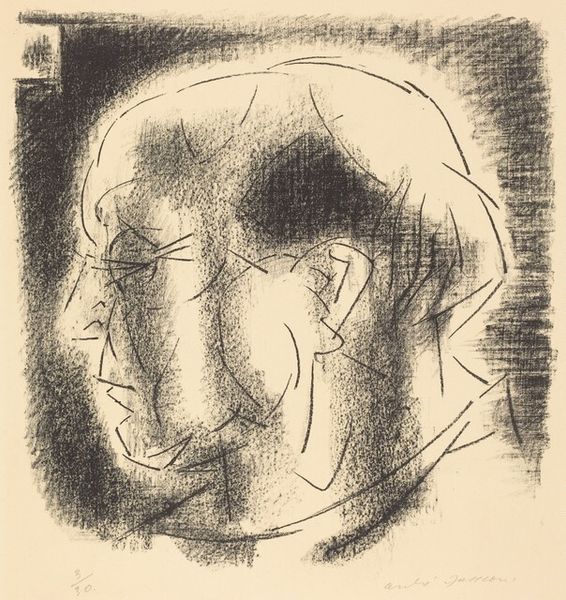
drawing, ink
#
portrait
#
drawing
#
ink drawing
#
figuration
#
ink
#
portrait drawing
Dimensions: height 134 mm, width 194 mm
Copyright: Rijks Museum: Open Domain
Editor: This is Leo Gestel’s “Portret van man,” or “Portrait of a Man,” an ink drawing from around 1932 or 1933. There's a raw quality to the work, and an unfinished appearance; what strikes you about it? Curator: I am immediately drawn to the expression captured in this seemingly unfinished state. The harsh lines, almost violent strokes of ink, reflect a period of immense social and political tension. The 1930s were a breeding ground for ideologies rooted in division and oppression. Gestel, working during this era, couldn’t help but be influenced, or even incensed, by what was going on. What kind of man do you think Gestel was representing? Editor: I see a face burdened by the weight of something unseen. The stark contrast, and the darkness pooled around the eyes and mouth, hints at anxiety or suppressed anger. Do you see a social commentary in this expression? Curator: Absolutely. Considering Gestel's Jewish background, and the rise of antisemitism at that time, this portrait becomes a powerful statement. Is the sitter perhaps a symbol of vulnerability? His expressive style deviates from conventional portraiture. He’s almost stripped bare, devoid of societal artifice. Editor: That's insightful. I didn't consider the biographical details, but it adds another layer of meaning. How does Gestel’s style reinforce the subject’s apparent vulnerability? Curator: The distorted features, achieved through the vigorous use of ink, challenge the viewer to look beyond mere physical resemblance. The subject is reduced to a series of raw emotions made manifest through jagged lines and shadowy pools of ink. Gestel captures something universal about the human condition in times of distress, something he himself may have felt acutely. This resonates with our current conversations around identity and resistance. Do you agree? Editor: I do. Seeing it framed as resistance through vulnerability definitely gives me a new perspective on Gestel’s portrait. Thanks for sharing. Curator: And thank you for making new connections through social and political reflection.
Comments
No comments
Be the first to comment and join the conversation on the ultimate creative platform.
